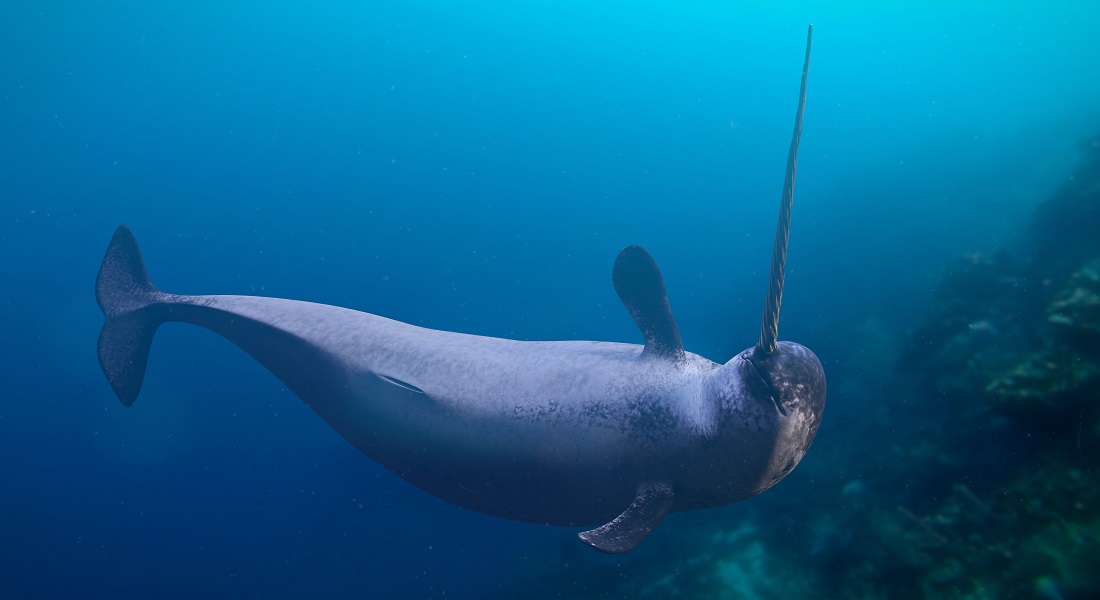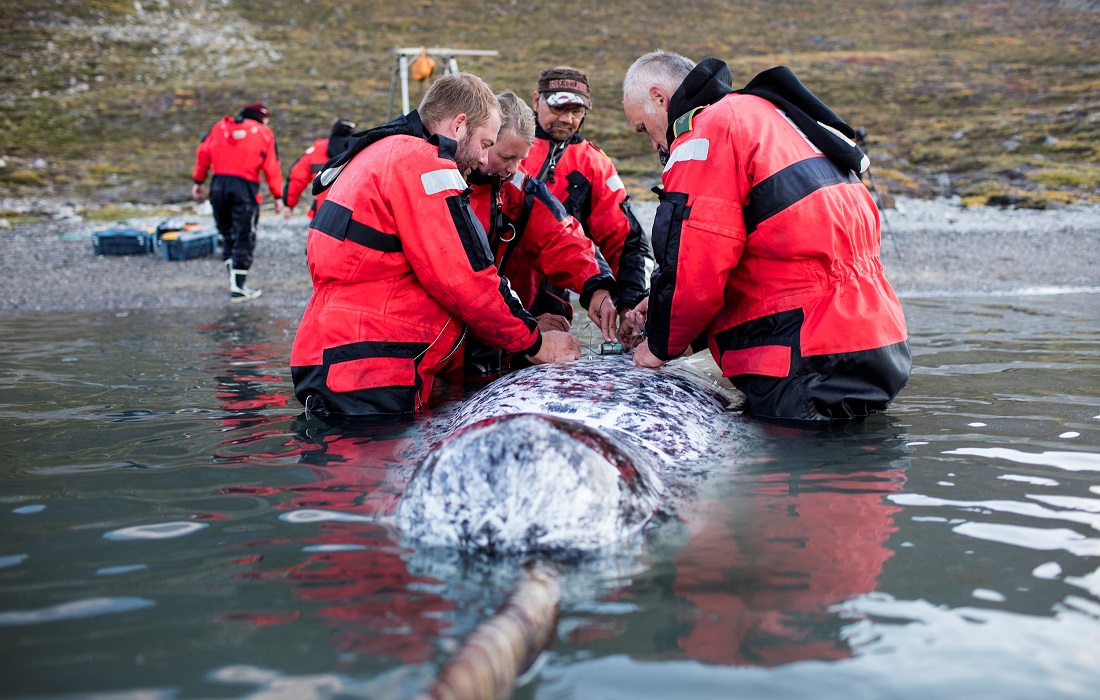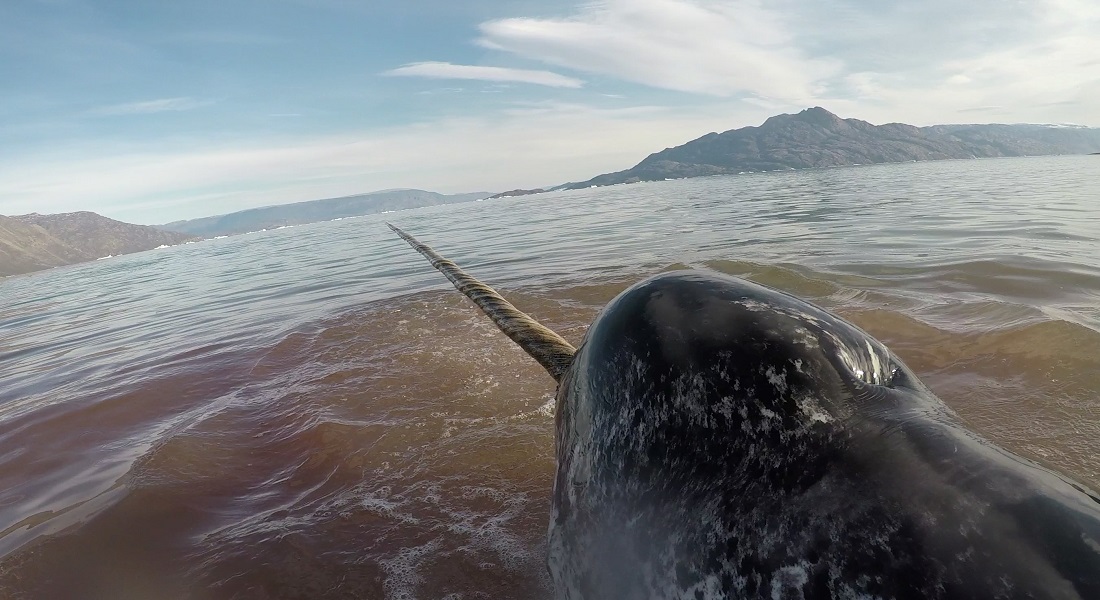Algorithm reveals the mysterious foraging habits of narwhals
An algorithm can predict when narwhals hunt – a task once nearly impossible to gain insight into. Mathematicians and computer scientists at the University of Copenhagen, together with marine biologists in Greenland, have made progress in gathering knowledge about this enigmatic Arctic whale at a time when climate change is pressuring them.

The small whale, known for its distinctively spiraled tusk, is under mounting pressure due to warming waters and the subsequent increase in Arctic shipping traffic. To better care for narwhals, we need to learn more about their foraging behaviour – and how these may change as a result of human disturbances and global warming. Biologists know almost nothing about this. Because narwhals live in isolated Arctic regions and hunt at depths of up to 1,000 meters, it is very difficult – sometimes impossible – to gain any insight whatsoever.
Ironically, artificial intelligence may be the answer to the mystery of their natural behaviours. An interdisciplinary collaboration between mathematicians, computer scientists and marine biologists from the University of Copenhagen and the Greenland Institute of Natural Resources demonstrates that algorithms can be used to map the foraging behavior of this enigmatic whale.
"We have shown that our algorithm can actually predict that when narwhals emit certain sounds, they are hunting prey. This opens up entirely new insights into the life of narwhals," explains Susanne Ditlevsen, a professor at UCPH’s Department of Mathematical Sciences who has helped marine biologists in Greenland with the processing of data for several years.

"It is crucial to gain more insight into where and when narwhals hunt for food as sea ice recedes. If they are disturbed by shipping traffic, it matters whether this is in the middle of an important foraging area. Finding out however, is incredibly difficult. Here, artificial intelligence seems to be able to make a huge difference and to a great extent, provide us with knowledge that could not otherwise have been obtained," says cetacean researcher Mads Peter Heide-Jørgensen, a professor at the Greenland Institute of Natural Resources and adjunct professor at the University of Copenhagen. He adds:
"In a situation where narwhals are in deep water, in the middle of the Bay of Baffin during December, we currently have no way of finding out where or when they are foraging. Here, artificial intelligence seems to be the way forward."
Algorithm maps clicks and buzzes
Until now, the best way to learn about the hunting patterns of narwhals has been to collect acoustic data using measuring instruments attached to their bodies. Like bats, narwhals orient themselves using echolocation. By making clicking sounds, they explore their environment and orient themselves. As they begin to hunt, these clicks shorten in interval to become buzzing. While the buzzing sounds are therefore interesting to researchers, it is impossible to collect acoustic data in many places. Furthermore, recording these sounds is highly data-intensive and time consuming to analyze manually.
As a result, the researchers set out to investigate whether, by using artificial intelligence, they could find a pattern in the way whales move and the buzzes they emit. In the future, this would make it possible for them to rely only on measurements of animal movements using an accelerometer, a simple to use technology familiar to us from our smartphones.
"The major challenge was that these whales have very complex movement patterns, which can be tough to analyze. This becomes possible only with the use of deep learning, which could learn to recognize both the various swimming patterns of whales as well as their buzzing sounds. The algorithm then discovered connections between the two," explains Assistant Professor Raghavendra Selvan of the Department of Computer Science.
The researchers trained the algorithm using large quantities of data collected from five narwhals in Scoresby Sound fjord in East Greenland.
Now, the researchers hope to add to the algorithm by characterizing different types of buzzing sounds in order to identify the precise buzzing sounds that lead to a catch. This can be achieved by collecting data in which biologists give whales a temperature pill that detects temperature drops in their stomachs as they consume cold fish or squid.
• The researchers collected data from instruments attached to the backs of five narwhals in Scoresby Sund fjord in East Greenland.
• The instruments tagged to the narwhals fell off their backs automatically after 5-8 days, after which local fishermen retrieved them from the water.
• The research was conducted by Mạnh Cường Ngô (lead author) and Susanne Ditlevsen of the University of Copenhagen’s Department of Mathematical Sciences, Raghavendra Selvan of the University of Copenhagen’s Department of Computer Science and Outi Tervo and Mads Peter Heide-Jørgensen from the Greenland Institute of Natural Resources.
• The research results have just been published in the scientific journal Ecological Informatics.

Contact
Susanne Ditlevsen
Professor
Department of Mathematical Sciences
University of Copenhagen
susanne@math.ku.dk
+45 35 32 07 85
Raghavendra Selvan
Assistant Professor
Department of Computer Science
University of Copenhagen
raghav@di.ku.dk
Maria Hornbek
Journalist
Faculty of Science
University of Copenhagen
maho@science.ku.dk
+45 22 95 42 83

